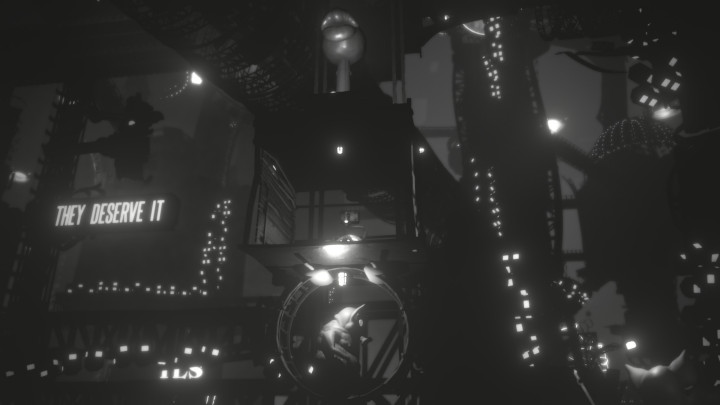
While trying to talk about White Shadows — the first game from developer Monokel — I kept coming back to the 2010 indie darling Limbo.
This comparison made even more sense when I stumbled upon an op-ed on Gamesindustry.biz, which was penned by Monokel co-founder (and White Shadows Creative Director) Daniel Wagner. In it, he credits Limbo for rekindling his lost enjoyment of playing games and for also planting the idea that maybe he could make a game of his own. And it isn’t difficult to see Limbo‘s influence on White Shadows, from the art style to the puzzle platforming elements to the grayscale nightmare setting.
But if all of those elements form an external resemblance to Limbo, at its core White Shadows feels a lot more like an Oddworld game. It is set in a society that’s comfortable with the denigration, enslavement, and wholesale slaughter of those deemed different or unworthy. The traversal feel more akin to this style of puzzle platforming as well — slower and more plodding, less focused on reflexes. The starkest difference between Oddworld and White Shadows, of course, is that the latter has a lack of flatulence.
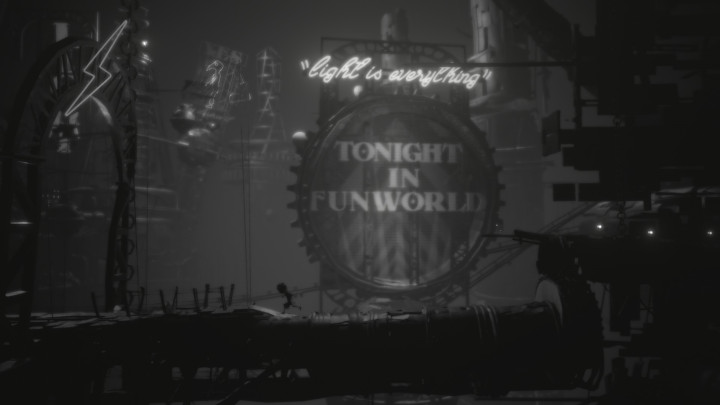
In White Shadows, you play as Ravengirl, who must navigate a treacherous, macabre, gothic factory with xenophobic, anti-avian propaganda plastered all over the place. It’s basically a vast slaughterhouse that uses the so-called dregs of this world’s society to create food for the upper class. Oh, and it’s also maybe a televised gameshow of death.
There seems to be a prevailing sentiment that light is a big deal and that staying in it is a great idea. It’s odd, but also rather interesting, even if the specifics aren’t entirely clear. What also isn’t clear is the main character’s motivation (other than not getting pulverized). She exhibits no expressed purpose, and the part she is meant to play in all of this is without context.
As the player, you simply start walking in one direction, maybe walk a little in the other for a bit, and ultimately just continue to walk in whichever direction the current goalpost is. What exactly is that goal? Well, that remains a mystery for most of the game.
So you walk to the left, and sometimes to the right. Sometimes you jump over gaps and fall down chutes. Occasionally you get to climb up ladders — one time you get to climb down a really big ladder too. And that’s pretty much it. As a puzzle platformer, even in the vein of Limbo, White Shadows is pretty light in both the puzzle and platforming departments.
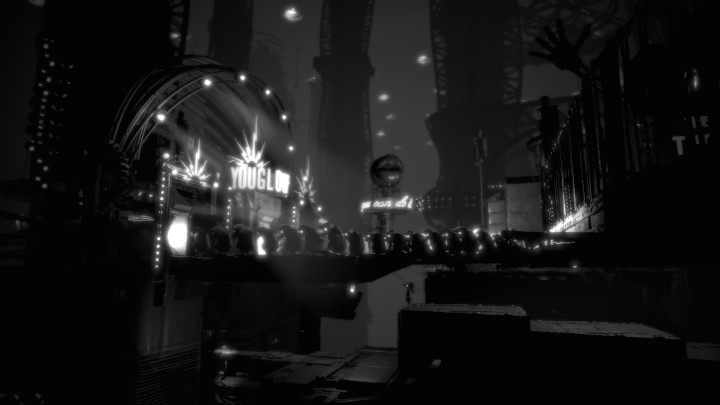
The platforming in the game — as meaningful or even mildly challenging as it can be at times — mostly just feels like a thin reason to make this a three-and-a-half-hour video game instead of a 25-minute short film. In fact, the more engaging moments are when the characters take a backseat and the world is allowed to dazzle the player. The camera will zoom out to showcase the cavernous expanses that make up the backdrops of this cold, inhumane apparatus. As intriguing and truly striking as the background imagery can be, it’s hard to get invested in Ravengirl’s arc once the game zooms back in again.
White Shadows is at its best the further the camera is from the characters models, which could be described as looking rather plain. These characters look like pewter figurines more than living and breathing characters. Limbo proved you could get invested in a character even if that character is just a featureless shadow boy with white eyes. White Shadows proves that it takes more than just resembling a character to foster a connection with them. Ravengirl feels bereft of characteristics other than looking a like hideous plastic doll that has yet to receive shadow lines, like some sort of totem of a lifeless plaything. And maybe that was intentional, considering some of the themes of this game; I just found her difficult to look at, let alone connect with.
For me, the first 60% of my time with White Shadows felt mostly like mindless traversal set to striking backdrops. However, once I got into the last two chapters, things started to pick up and I became far more engaged in the story, which shifts its narrative between multiple characters and even allows you to play as a character in different stages in their developmental cycle. That was really cool.
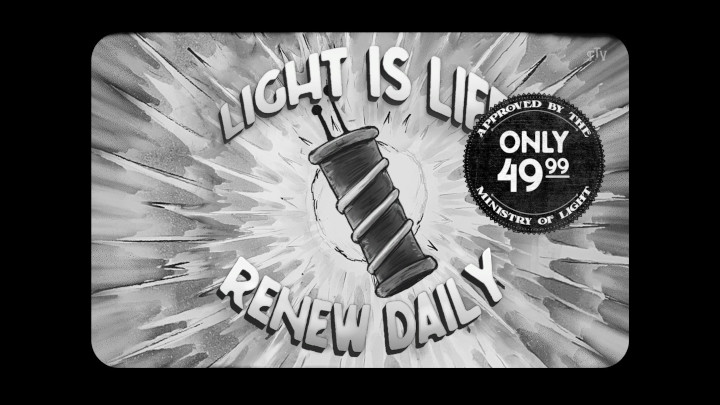
There are two instances, off the top of my head, when the gameplay is jarringly interrupted by an in-world animated propaganda PSA. In both cases, this occurred just I had jumped from one platform down to a lower one. It felt like, right before the character’s landing animation came to a full stop, the screen would go black before triggering the cutscene. I thought the game had just crashed, or that I’d somehow missed the landing and had died.
But my biggest gripe is that the sound design leaves something to be desired. The majority of the time, when there actually are sound effects instead of just faint industrial droning noises, it sounds like whoever was in charge of audio just sampled Mars Attacks playing on a TV in a room next door. That’s to say there’s a lot of muffled quacking and squabbling.
In White Shadows‘ defense, there are some nice classical music tracks peppered throughout the game, with a rare white-knuckle platforming sequence that takes place on highspeed trains set to “Flight of the Bumblebee.” It was a nice set piece, even if the action on screen didn’t quite match the frenetic nature of the song.
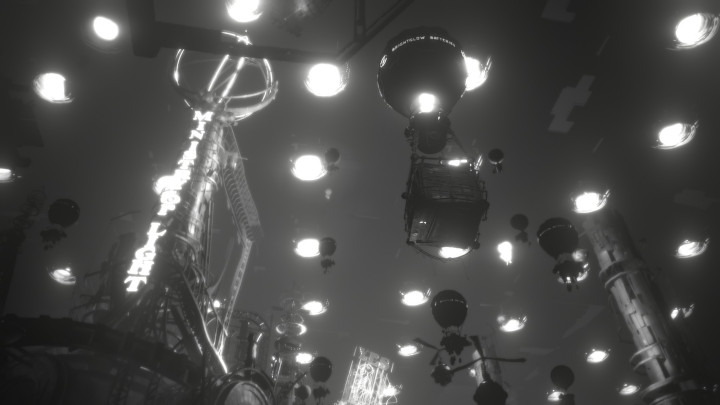
All things considered, I enjoyed my time with White Shadows, even if I was less than enthused by the platforming mechanics. In the later part of the game, White Shadows finally feels like it’s firing on all the right cylinders. The story becomes suddenly engaging, with a sense of urgency. It feels like White Shadows finally figures out how to say what it had been beating around the bush at. The platforming starts to provide a bit of a challenge in the later part of the game as well. And then, it sort of abruptly ends, just when it starts to get David Lynch levels of weird.
As I watched the credits roll, I felt like I like I had been on a worthwhile adventure that surprisingly left an imprint on me.
White Shadows is a solid first outing for Monokel. Some of its messaging can come off a bit heavy-handed, but I still give the game credit for at least scratching at the surface of societal and racial discrimination in an industrial age where vulnerable groups are castigated for their differences. In White Shadows, of course, those groups are fabrications, which makes them symbols rather than pure analogs for those sorts of groups in the real world.
And I can’t deny the fact that this game is visually striking.
White Shadows is a half-full glass of Guinness; dark and heady with a bold, almost confrontational lingering aftertaste.
Disclaimer: I was given a review code for White Shadows for this article, but the opinions expressed here are my own.